Search the Special Collections and Archives Portal
Search Results
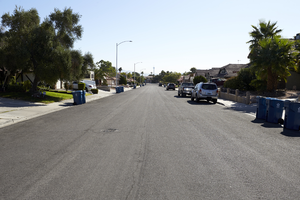
Peppermill Drive off Torrey Pines Drive north of West Sahara Avenue, looking east, Las Vegas: digital photograph
Date
2017-09-20
Archival Collection
Description
Single family homes line Peppermill Drive off Torrey Pines Drive north of West Sahara Avenue.
Image
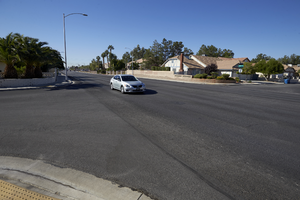
Car on Torrey Pines Drive north of West Sahara Avenue, looking south, Las Vegas, Nevada: digital photograph
Date
2017-09-20
Archival Collection
Description
A car travels through the intersection of Torrey Pines and Peppermill Drives north of West Sahara Avenue.
Image
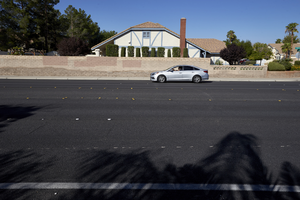
Car and house on Torrey Pines Drive, looking west, Las Vegas, Nevada: digital photograph
Date
2017-09-20
Archival Collection
Description
A car travels south on Torrey Pines Drive north of West Sahara Avenue in front of a typical single family home in the neighborhood.
Image
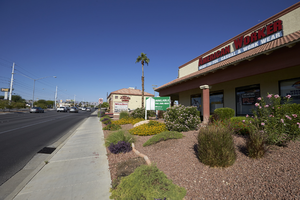
Traffic and businesses on West Sahara Avenue east of Torrey Pines Drive, looking west, Las Vegas, Nevada: digital photograph
Date
2017-09-20
Archival Collection
Description
Traffic flows in front of commercial development along West Sahara Avenue east of Torrey Pines Drive.
Image
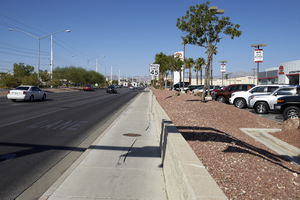
Traffic and an auto dealership on West Sahara Avenue east of Torrey Pines Drive, looking west, Las Vegas, Nevada: digital photograph
Date
2017-09-20
Archival Collection
Description
Traffic flows on West Sahara Avenue east of Torrey Pines Drive in front of an auto dealership.
Image
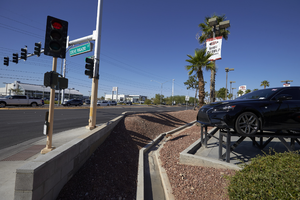
Car dealership on West Sahara Avenue at Steve Rigazio Court, looking southwest, Las Vegas, Nevada: digital photograph
Date
2017-09-20
Archival Collection
Description
An auto dealership occupies the corner of West Sahara Avenue and Steve Rigazio Court east of Torrey Pines Drive.
Image
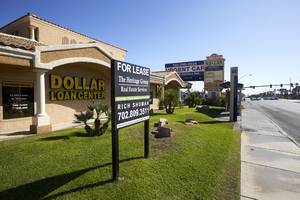
Dollar Loan Center and other businesses on West Sahara Avenue west of Jones Boulevard, looking east, Las Vegas, Nevada: digital photograph
Date
2017-09-20
Archival Collection
Description
Commercial development along West Sahara Avenue west of Jones Boulevard.
Image
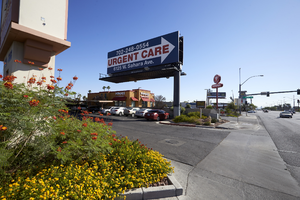
Billboard on West Sahara Avenue and Jones Boulevard, looking east, Las Vegas, Nevada: digital photograph
Date
2017-09-20
Archival Collection
Description
A large billboard overshadows the Popeye's Chicken restaurant on the northwest corner of West Sahara Avenue and Jones Boulevard.
Image
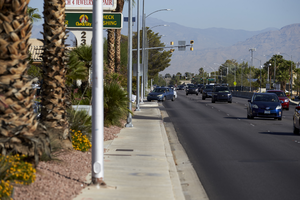
Traffic on Jones Boulevard north of West Sahara Avenue, looking north, Las Vegas, Nevada: digital photograph
Date
2017-09-20
Archival Collection
Description
Traffic flows south on Jones Boulevard towards West Sahara Avenue.
Image
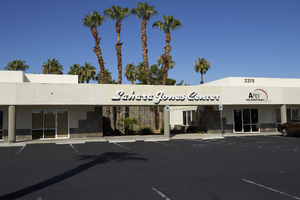
Sahara Jones Center on Jones Boulevard towards West Sahara Avenue, looking west, Las Vegas, Nevada: digital photograph
Date
2017-09-20
Archival Collection
Description
Parking at the Sahara Jones Center on Jones Boulevard north of West Sahara Avenue.
Image
Pagination
Refine my results
Content Type
Creator or Contributor
Subject
Archival Collection
Digital Project
Resource Type
Year
Material Type
Place
Language
Records Classification
